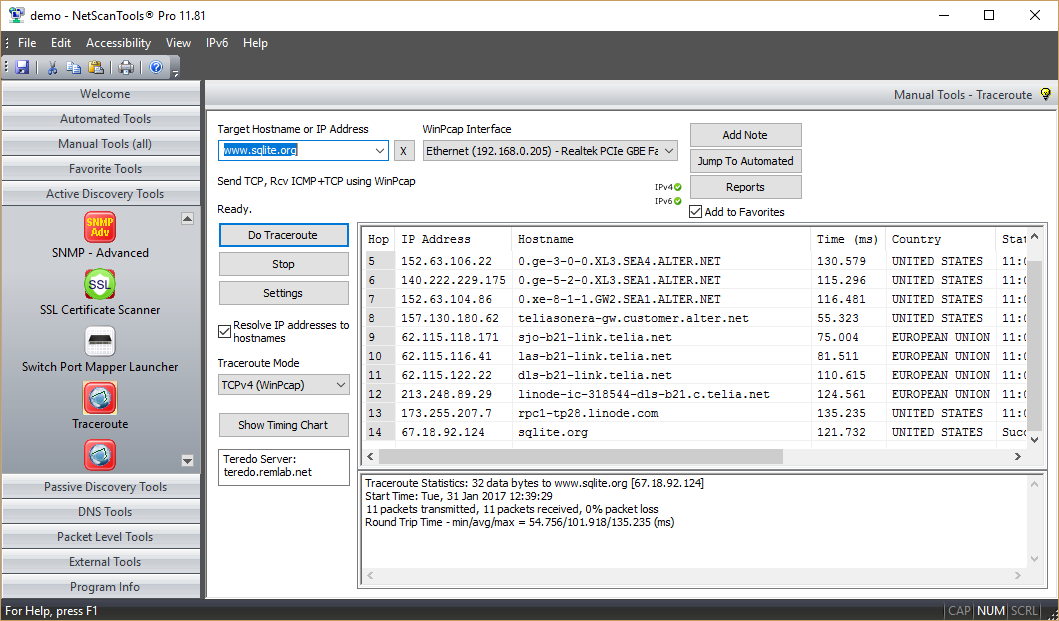
When they get to the second hop, the router reduces the TTL to "0", and sends back a message again. As the packets pass through the first hop, their TTL is reduced to "1" and they are passed on to the next device.
#Traceroute 1 hop windows
This diagram depicts how this works in a Windows environment (click to enlarge): It does this by sending multiple waves of data packets out, increasing the TTL for the packets each time. Now you have the RTT, or "Round-Trip Time", for each hop.

Why? Because then it can measure the duration of time between when the data is sent out, and when the ICMP message is received back for each hop. Traceroute makes sure that each hop on the way to a destination device drops a packet, and sends back an ICMP error message. Still with me? Hang on just a little longer! Probing the Hops At the point a device drops a packet, it sends an ICMP message back to the source device to let it know the packet has been killed. This way, if there is a problem with routing in the network, the data packet will not be passed around indefinitely. If a data packet's TTL reaches "0", the data is not routed further, but is dropped. In other words, it can only make 25 more hops before it runs out of time to live. So, for example, once our data packet with a TTL of "30" has passed through five devices (or hops), it will have a TTL of "25". When a data packet reaches a hop (such as a router) on the way to the destination device, the TTL value is decreased by 1. Each packet of data that is sent out is assigned a TTL value - for example, "30". The purpose of TTL is to limit how long data will "live" in an IP network. Traceroute makes use of a network mechanism called TTL, or "Time to Live". How does it do this? Here it gets a bit trickier to explain succinctly, so stay with me! TTL For each hop on the way to the destination device, traceroute provides the data's Round-Trip Time (RTT) and, when possible, the name and IP address of the device.
#Traceroute 1 hop series
To get between these two points, data must travel - or "hop" - through a series of devices, such as routers or switches, and hosts. These tools all essentially do the same thing: map the route that data takes from a point in a network (e.g. Most platforms offer traceroute as a tool, such as TRACERT on Windows, or TRACEROUTE on Linux and Mac. In a future post I will give some tips for interpreting the results.

#Traceroute 1 hop how to
In this post we'll look at how traceroute works and how to do a traceroute. Yet, despite this ease of use, there is a fairly good chance you will misinterpret its results if you do not know how it works.
/tracert-command-windows-10-5726788f3df78ced1fe5e97c.png)
And, l ike ping, the beauty of traceroute lies in its simplicity: it's a tool that any user with access to a command prompt can run. While ping can tell you if there is a problem, traceroute can help point to where the problem is. Since we covered ping in a previous post, it makes sense that we now take a look at its slightly more capable cousin. Whether you are a network n00b or a veteran administrator, ping and traceroute are probably your first two ports of call when troubleshooting network and internet connectivity or latency issues. And so it is in the internet world with ping and traceroute. Some things fit so well together that it is almost impossible to separate them when talking or thinking about them.


 0 kommentar(er)
0 kommentar(er)
